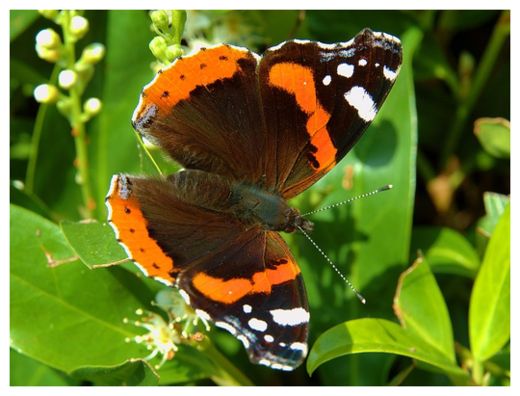Brooklyn - The Red Admiral Butterfly, known as the "Butterfly of Doom," was especially abundant the year the Russian Tsar Alexander II was assassinated. Lepidopterist Kurt Johnson reports an unusually large number of the species are descending upon Brooklyn, NY According to Dr. Kurt Johnson, a retired lepidopterist from the American Museum of Natural History, in the last two days there has been
Butterfly population explosions are not particularly common, says Dr. Johnson. In 1881, the Red Admiral, also known as the Red Admirable, was found in great abundance in Russia. According to Russian lore, the undersides of the wings bore markings that resembled the numbers "1881." Russians came to call the insect the "Butterfly of Doom," and some believe its great numbers "signaled" the beginning of the revolution and the death of the Tsar.an outbreak of Red Admirals (Vanessa atalanta) in Brooklyn the likes of which I have never seen (not even close), and I've been here 45 years. ... [T]here were at least a half dozen Red Admirals for every 10 paces one walked.... [At] the Botanical Garden, Red Admirals were also flying all over the place, chasing each other etc.
The "Butterfly of Doom" also appears in the writings of Russian-American novelist and lepidopterist, Vladimir Nabokov, who specialized in the study of some small butterflies known as "Blues." Dr. Johnson, also an expert on Blues, wrote about the novelist's favorite butterfly in a book called Nabkov's Blues . It was through Nabokov's writings that Johnson learned of the Red Admiral's association with the Russian Revolution. Normally, Red Admirals migrate north from Guatemala to Canada beginning in March, but they do not usually arrive so early and in such great numbers. Unusual sitings were also reported in Le Roy, NY by the Daily News, in Trenton, NJ by CBS News and in Ottawa, Canada by Canada.com. Dr. Johnson speculates that the warm winter
There are no reports that the Brooklyn butterflies bear the numbers "2012" on their wing undersides.might have initiated the breakout.... One would have to account for why there are so many of them in this year's spring brood if nothing last year seemed unusual.




..an omen?